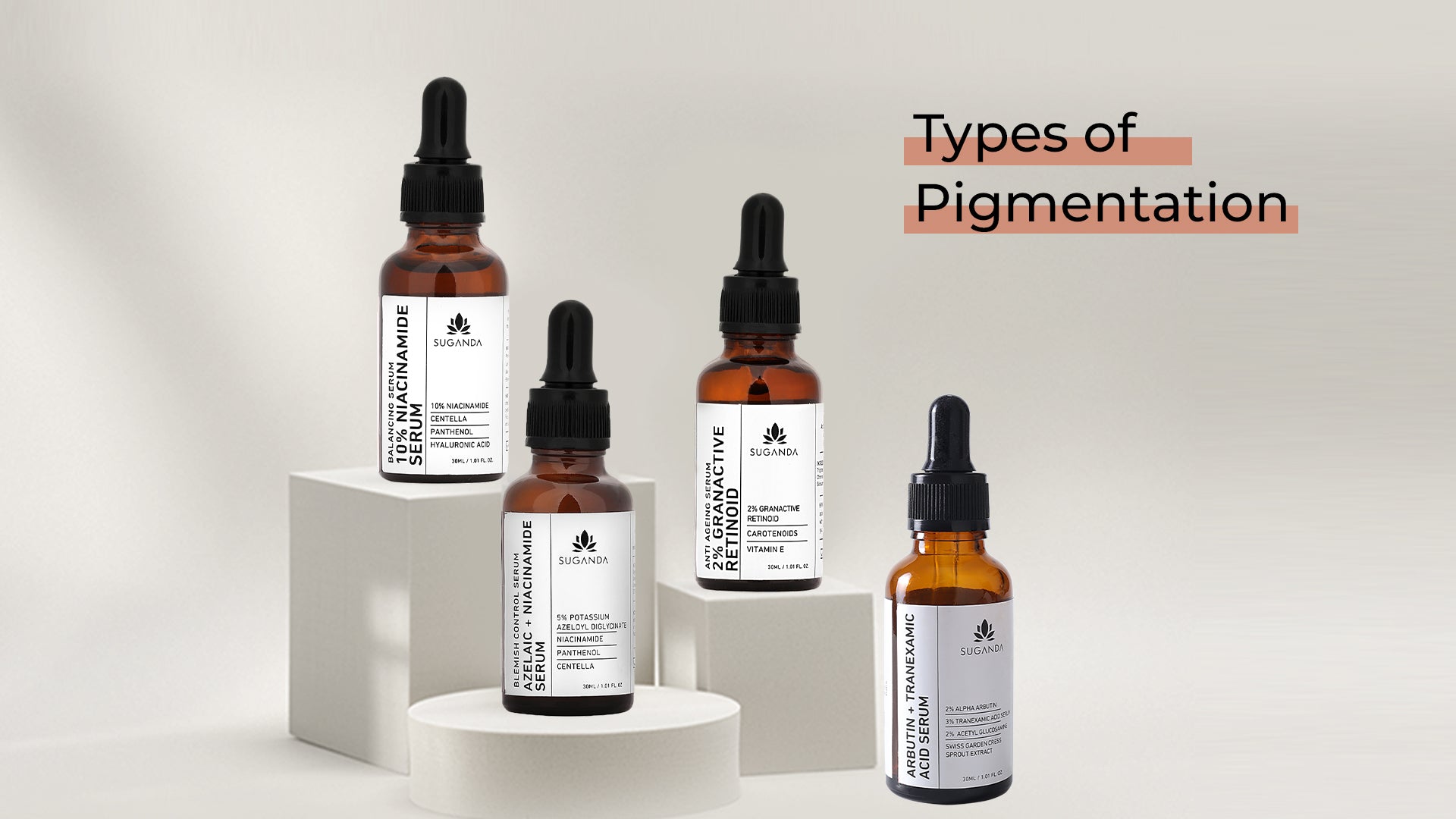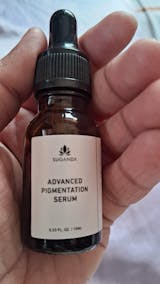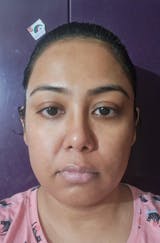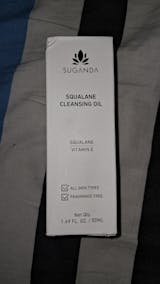We all want skin that is evenly toned, radiant, redness-free, and discoloured. However, as we get older, our skin develops patches or spots of red (from rosacea, flushing, or broken capillaries) and brown (from UV damage and melasma).
But not all pigmentation is equal, and different types of pigment changes require different treatments. Knowing what your pigmentation issues are is the first step towards resolving them.
Did you know that there are 4 common types of pigmentation?
Melasma, Post-Inflammatory Hyperpigmentation, Hypopigmentation, Freckles and Solar Lentigines
These are the different types of pigmentation.
Hyperpigmentation and hypopigmentation are the 2 common terms you can see if you open any journal on pigmentation.
Prior to any discussion regarding hyperpigmentation, it is imperative that the reader becomes familiar with the term “pigmentation” first.
In simple words, skin pigmentation is the colour of skin. Skin cells, or melanocytes, produce a substance called melanin. The darker skin colour is, the more melanin there is in their epidermis.
Skin colour is mainly dependent on their racial and geographical background. Different people have different skin pigmentations because of these reasons.
Hyperpigmentation occurs when melanin is produced in excess, whereas hypopigmentation occurs when there is lesser production of melanin causes hypopigmentation.
First of all, let's see what is the reason for this overproduction of melanin, then you can differentiate the type of pigmentation you are bothered about.
What causes hyperpigmentation?
Your skin tone is the product of a complex process in which melanocytes (skin cells), which are special cells found in the outer layer of your skin, produce melanin. Melanosomes are organelles (or mini-organs) found inside these skin cells. The size, amount and functioning of these small melanin factories determine the colour of your skin.
While hypopigmentation can be only treated by a dermatologist, topical therapy can treat hyperpigmentation to some extent.
Let’s see the different types of melasma and their causes that can give you a better understanding.
Melasma:
Melasma is a type of hypomelanosis of the skin that is characterized by irregular brown macules that are symmetrically distributed across sun-exposed parts of the body, especially the face.
Melasma affects more women than males, and it usually appears between the ages of 20 and 40. Melasma is especially common in those who tan easily or have brown skin naturally (Fitzpatrick skin phototypes III, IV). It's less common in those with fair skin (Fitzpatrick types I, II) or dark skin (Fitzpatrick types III, IV) (Fitzpatrick types V, VI).
How do you identify melasma?
Melasma causes patches of discolouration. The colour of the patches is darker than your usual skin colour.
Sources. You can see these dark patches usually on cheeks, forehead, bridge of the nose, chin
Sometimes, it can also appear on your arms and legs.
To treat melasma, there are several topical treatments including vitamin C, kojic acid, niacinamide, hydroquinone, and azelaic acid. However, if your melasma is tough and unable to treat, please visit a dermatologist for safer treatment options.
Post-Inflammatory Hyperpigmentation
Postinflammatory hyperpigmentation (PIH) is a common disorder that occurs after a skin injury or inflammation. whatever the reason for the inflammation on the skin,for example, injuries, burns, insect bites, allergic reactions, or cosmetic procedures, it could turn your skin dark. It is a chronic condition that is more common and severe in those with darker skin (Fitzpatrick skin types III-VI).
As the pigmentation improves gradually, it can take months to years, requiring prolonged treatment.
How do you identify Post-Inflammatory Hyperpigmentation?
As it is the aftereffect of the inflammation, you can see the darkness than your usual skin colour at the place of injury or the inflammation due to allergy and any cosmetic procedures. This colour could aggravate and become darker if exposed to sunlight.
Ascorbic acid. N-acetyl glucosamine. Niacinamide. Arbutin. Azelaic acid. Retinoids.
These are the commonly used ingredients to treat hyperpigmentation whether in combination or alone.
SPOT THE DIFFERENCE: ARE THOSE ADORABLE FRECKLES OR UNWANTED AGE SPOTS?
The basic difference between a freckle and a solar lentigo is that a freckle increases the amount of pigment generated by melanocytes rather than the number of cells. Lentigo simply refers to a patch of skin with a higher density of cells called melanocytes, which create the dark pigment melanin.
Freckles are small brown-colored spots, mostly occurring on the face and arms. They are extremely common and are mostly seen in lighter-skinned people whereas solar lentigines are one more type of lentigines and are prominent on the face, forearms. These spots can be treated using retinoids or glycolic acid in your skincare products.
Hyperpigmentation post-acne is also common among individuals with acne-prone skin.
Identifying which type of pigmentation that is bothering you is the key to finding the right treatment for your skin.
Sources:
Melasma: A Condition of Asian Skin (nih.gov)
Postinflammatory Hyperpigmentation (nih.gov)






 +91 9347578980
+91 9347578980



